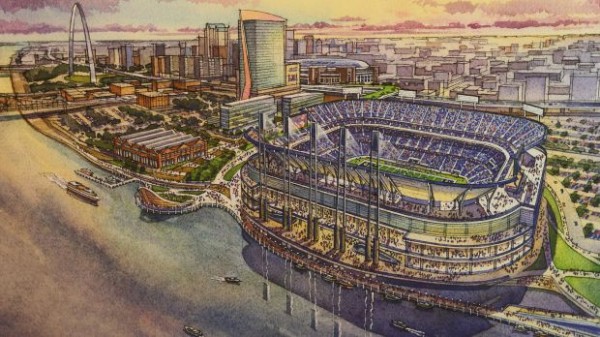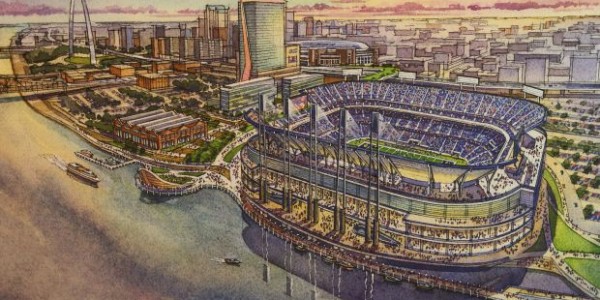
In the ongoing battle between the St. Louis Rams and their owner, Stan Kroenke, and the city he’s trying to move the team away from in favor of Los Angeles, comes the eye popping number of $215 million from taxpayer money that might help him get what he wants.
Kroenke wants to pay for his own stadium, but also wants to choose where that stadium is going to be. While the NFL seems more busy pushing for the San Diego Chargers and Oakland Raiders to be the new Los Angeles teams, sharing a Carson City stadium, the Rams, previously a Los Angeles team, also want to join in on the fun, possibly in Inglewood, although it might take time before this is all resolved.
The city of St. Louis, via its task force, is obviously trying to keep it’s NFL team in town. National Car Rental has committed to buying the naming rights for the stadium that would allow Missouri to keep ownership of the Rams. What followed in almost immediate response has been the story of the numbers of this whole project of building a new stadium for the Rams via St. Louis magazine.

According to SLM, the city’s obligations to cover debt retirement would jump from about $6 million per year at present to $9,785,000 in 2020, then increase every year to a staggering $15,975,000 in 2051. The new schedule is in addition to another one that essentially mirrors the existing payments made by the city toward payoff of the Edward Jones Dome (about $6 million annually). The city’s current contribution toward bond payments on the dome would have disappeared after 2021, when the bonds would have been paid in full. But backers of the stadium contend that continuing at approximately that level going forward still reflects no new tax increases.
Those trying to keep the team in the city suggest the new stadium will generate $63 million in revenues by 2019—as opposed to the current level of just $36 million. A 75% rise in what Rams fans, corporate suite holders, and sponsors are presently spending? The super optimistic projections also talk about 63,000 seats being sold in the new stadium compared to the current average attendance of 52,000. These projections also forecast an annual 3% rise in revenues through the year 2051.
But these numbers don’t exist well with reality. The Rams haven’t been doing well to fill the stadium for quite some time. They haven’t been to the playoffs in over a decade, and the initial enthusiasm from the previously “new” is long gone. The 3% annual increase in revenues? The increase in spending by 75%? Hard to understand what those numbers are based on, and there is no indication in the documents that the city’s commitment to the project would be reduced if the projections are not achieved.
